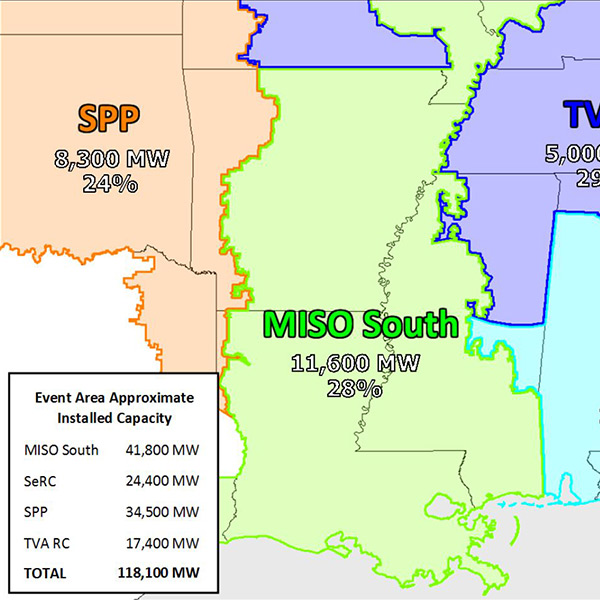By Hudson Sangree
Having taken over reliability coordinator functions in CAISO’s service territory this summer, the ISO’s RC West is now preparing to take over for most of the West come November. During a conference call Thursday, the RC West Oversight Committee was briefed on the results of the first transition and the progress of the second.
The July 1 handover of CAISO’s territory from Peak Reliability went smoothly, but there’s still room for improvement, ISO staff members told the committee. The large oversight committee is made up of representatives from the 39 transmission owners and balancing authorities that signed up for CAISO’s RC services.
CAISO will eventually take over about 72% of the load in the Western Interconnection from Peak, which decided to wind down its operations this year. RC West Moving Smoothly Toward July Handover.)
The July 1 transition involved entities in California and Baja California that participate in CAISO. Fifty surveys sent out in July were intended to “get some feedback as to how the onboarding went, and specifically what are some of the things we might glean as far as lessons learned to improve our processes for the Nov. 1 customer launch,” said Joanne Serina, CAISO’s executive director of customer service and stakeholder affairs.
The surveys showed a handful of areas that could be improved upon, including a need for more clarity and explanation in the transition checklists new customers must follow. Those changes and others will be incorporated for the next group of new customers, Serina said.
Tim Beach, director of operations at RC West, said it was “pretty quiet on the operations front” because of milder temperatures in California this summer. But the Tucker Fire, a wildfire near the state’s northern border, threatened the California-Oregon Intertie, three 500-kV transmission lines that connect the states’ grids.
Two of the lines had to be taken out of service in late July, reducing capacity to less 600 MW and triggering a transmission emergency and multiple energy emergency alerts in California, Beach said.
Phase 2 Progressing
Nancy Traweek, executive director of system operations at CAISO, told the committee that a NERC-led team conducted a site visit at RC West at the end of July and plans to come back in September to follow up on pending tasks as part of its certification process.
A test of RC West’s messaging system and a “blast call” to customers went well recently, said Joanne Alai, RC project manager at CAISO.
RC West is in the midst of a two-month data validation process to ensure data from participants comes in clean.
Alai said it also is conducting “day in the life testing,” an “are you ready, and do you know what you’re going to be doing” dry run before RC West begins shadow operations in September. The shadow operations, in which CAISO staff observe Peak employees, is itself a preparation before operations officially commence in November, she noted.
Gridforce Runs out of Time
Gridforce Energy Management, which had intended to begin providing RC services to several small generation-only balancing authority areas in the West, instead reached an agreement to use RC West services through at least April 2021.
“The timeline [for certification] was tight,” Duncan Brown, director of power services corporate development for Gridforce parent NAES, told ERO Insider in an interview this week. Using RC West initially will “allow us to assess our options,” he said.
SPP is also going through its certification process, which included a site visit earlier this month by a 23-person team including staff from the Western Electricity Coordinating Council, Certification Team Checks SPP’s Western RC Function.)
Rich Heidorn Jr. contributed to this article.




